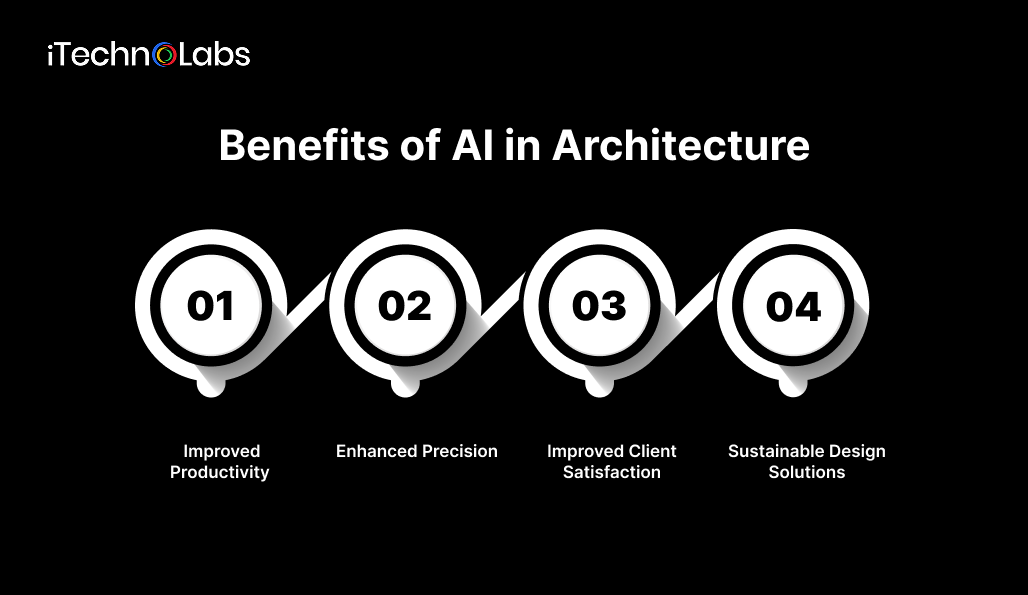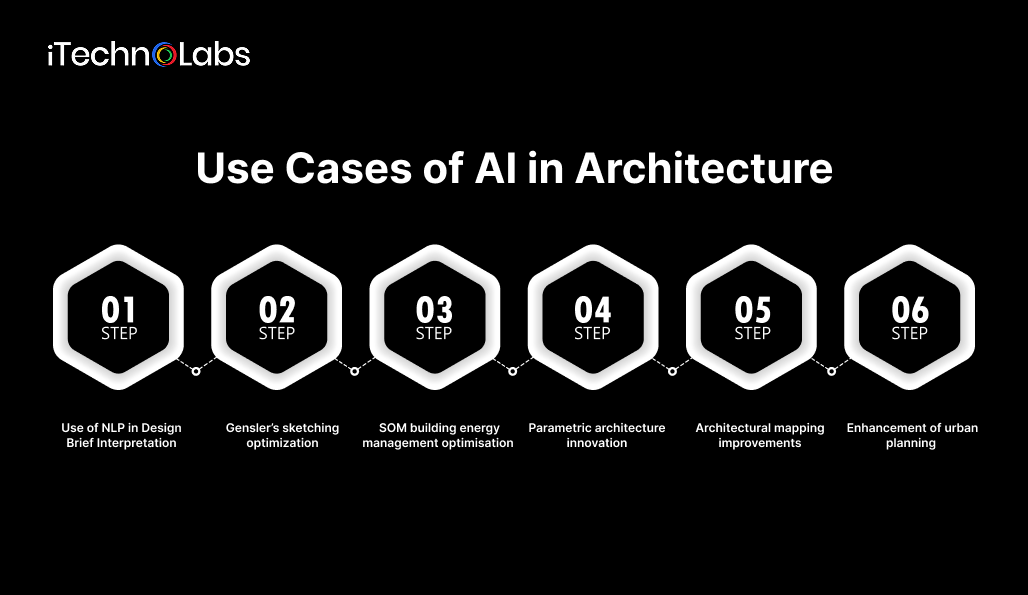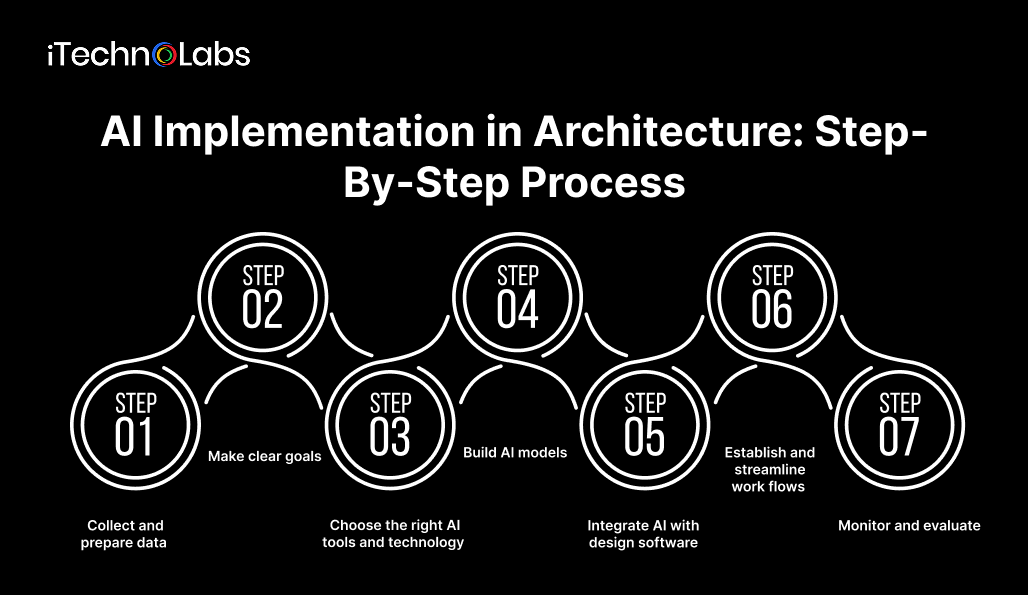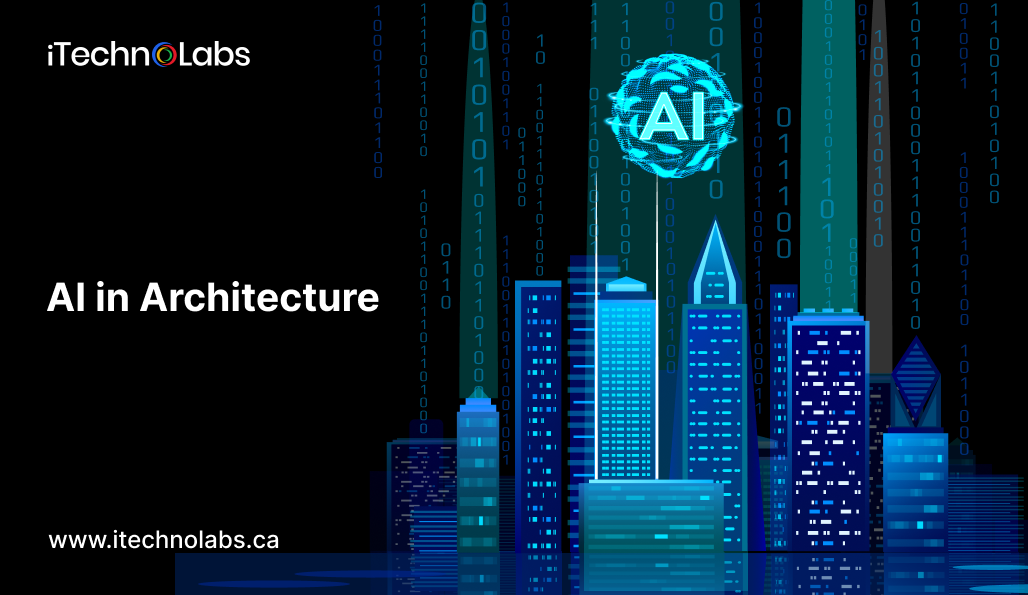Introduction
Imagine if you can actually see how your future home will look even before the first brick is laid. Sounds futuristic? Well, it’s a reality now. With AI coming into every industry in the world, architecture is not unaffected either.
AI tools and technologies like machine learning, natural language processing, generative AI and deep learning work for architects are becoming faster and easier than ever.
Artificial intelligence in architecture allows architects to produce a vast range of designs that meet client demands in no time, enhancing the overall productivity of the development team, and achieving the results in less cost and time.
The generative AI tools automates manual tasks and allows the development team to focus on other important things. Additionally, then combined with augmented reality and virtual reality softwares, the AI tools allows the clients to take a virtual tour of their future property. This let them make an informed decision in the early stages of the project. Read this blog to learn what AI in architecture is, its benefits, use cases, and how to implement the same in your organization.
AI in Architecture: Understanding the Basics
AI in Architecture drives efficiency, sustainability and innovation. With AI, architects can explore numerous design possibilities by just feeding the details like the size of the land, material available and some visual references.
Project management is an important part of architecture and AI helps in that too by allocating resources efficiently and ensuring timely completion of the project.
Further artificial intelligence systems in place help in building sustainable buildings by recommending eco-friendly material.
By integrating generative AI with VR and AR technologies, clients can take a virtual tour of the property and experience how it will look after being made.
The speed at which AI in architecture is advancing can be understood from the fact that 46% architects use artificial intelligence tools in their projects while 24% are going to use it from next year.
By asking the right questions and creating the right scenarios, architects can unleash the full potential of artificial intelligence tools.
Benefits of AI in Architecture

With just a few details, AI can create thousands of sustainable designs within seconds, allowing architects to execute the projects faster without wasting time on creating the blueprint. Apart from saving time and cost, it also helps in efficient project management. By integrating AR and VR with generative AI tools, one can experience the finished product even before the first brick is laid. Given below are some of the benefits of using AI in architectural projects:
1. Improved Productivity
AI in architecture helps to increase productivity by automating time-consuming tasks such as initial floor plans and analysing structural integrity. By doing all these tasks itself it frees architects to focus on more complex designs.
AI-driven software can better tell where to place the windows for optimal lighting in the room and orientation of a building for maximum energy output.
2. Enhanced Precision
Any minor error in an architectural project can cause thousands of dollars. Hence, generative AI tools detect and correct every error that humans might overlook. This ensures enhanced safety and compliance to the standards.
AI can analyse the structures’ performance under different conditions providing insights into safety and durability of the design.
3. Improved Client Satisfaction
Unlike traditional models and blueprints, AI combining with augmented reality and virtual reality allows clients to have a virtual walkthrough into their future spaces. This helps them to make better decisions, increasing their confidence in the project.
Moreover, AI can generate detailed analytics explaining benefits of the project and ensuring transparent communication between architects and clients.
4. Sustainable Design Solutions
AI supports green architecture by recommending eco-friendly materials and optimizing building orientation for natural light and ventilation.
By integrating sustainability at the design stage, architects can create structures that are both efficient and environmentally responsible. This aligns with global standards for sustainable development while meeting client expectations for eco-conscious living.
Also, read: AI App Development in 2025: A Complete Guide for Businesses
Use Cases of AI in Architecture

Artificial intelligence is rapidly transforming the architectural landscape by allowing architects to create smarter, faster, and more sustainable designs.
As the industry adapts, the following use cases illustrate how AI is redefining architecture, bridging the gap between creativity and technology while fostering innovation in built environments.
1. Use of NLP in Design Brief Interpretation
Artificial intelligence tools using natural language processing technology can extract essential information from client briefs and improve the architectural process and completely meet the client’s needs.
These AI tools automatically draft the design, saving human time and minimizing errors. By using NLP these advanced softwares helps to find the best designs aligning with the clients requirements.
One of the renowned architecture firms named NBBJ, uses NLP based Chatbots to improve internal communication and streamline design documentation. These chatbots can quickly share the design knowledge among the members ensuring accuracy and timely completion of the project.
2. Gensler’s sketching optimization
Just like writers face the writer’s block, architects can also run out of ideas sometimes. Here comes tools that let you explore endless designs until you find the right one. Moreover, AI can also predict structural performance based on which architects can make better decisions in the starting of the project.
Gensler, an architecture company, uses AI for sketching of medicine by blending human creativity with technological innovation. This amalgamation allows for new insights and immediate feedback. At the end, using AI in the architectural design process helps to create species which are more sustainable, high performing and designed according to individual needs.
3. SOM building energy management optimisation
For efficient building energy management, AI analyses large volumes of data from multiple building systems, and adjusts lighting, cooling, heating, and ventilation. Thus, AI in architecture ensures that resources are used in the most efficient way.
Skidmore, Owings & Merrill (SOM) is one of the leading architecture firms utilizing AI for best energy utilization in their building projects. With real-time data SOM can reduce the cost by taking informed decisions on energy consumption and have a positive environmental effect.
4. Parametric architecture innovation
AI-driven parametric architecture allows architects to explore a vast range of design alternatives by using algorithms that automatically construct complex structures and forms based on the design criteria.
Perkins and Will, a renowned architecture firm, utilizes AI-driven parametric design tools to create the best building ideas. These highly powered tools let architects explore a wide range of design options and achieve maximum structural performance.
5. Architectural mapping improvements
Artificial intelligence tools are transforming the architecture industry forever. They automatically analyze geographical data and produce most accurate in-depth site maps. Also, they provide insights into the most effective uses of land and future development opportunities.
Jacobs Engineering Group utilizes artificial intelligence tools for architectural mapping. These technologies provide data-driven insights and insurance more effective design and planning.
6. Enhancement of urban planning
Artificial intelligence tools can analyze mountains of data related to public infrastructure, population density, and traffic and therefore help in developing more sustainable and efficient livable urban environments.
Quintain uses Delve, a machine learning software to optimize urban planning by creating sustainable layouts. The platform helps in the maximum space utilisation and creating better urban spaces.
AI Implementation in Architecture: Step-By-Step Process

Successful integration of AI in architecture requires a structured and methodical approach. Each stage, from initial planning to execution, ensures that the technology aligns with project goals while maintaining design integrity and efficiency. A step-by-step process not only minimizes risks but also maximizes the benefits of AI adoption. The following section outlines the essential phases architects and firms should follow to implement AI effectively within their workflows.
1. Collect and prepare data
AI models need a good amount of data to get trained. So start by collecting datasets on a large scale such as material properties, historical designed data, and environmental conditions. Now remove any kind of errors or omissions in the data and make it clean and relevant for AI models.
After that, organize the data in a structured manner so that the AI in architecture can easily analyze it and train itself. This crucial step will make sure that AI tools will create accurate designs for your projects.
2. Make clear goals
Specify clearly what it is that you want to achieve with AI in architecture such as achieving maximum sustainability, automating complex processes, or maximizing structural performance. Whether your goal is to reduce cost or improve the design efficiency, make sure you have the clarity of what you want to accomplish with AI.
Set measurable goals to monitor the advancements of AI projects. Involve people like client architects and engineers while matching AI goals with project requirements.
3. Choose the right AI tools and technology
There is a wide range of tools out there when it comes to using AI in architecture. By evaluating every technology and tool based on their pros and cons you can select the right one for your project.
While choosing the artificial intelligence tool it’s essential to ensure it smoothly integrates into your current workflow. Consider the scalability, user interface and ability to analyse large chunks of data. Lastly make sure a comprehensive user guide for these tools is available so that the maximum output can be gained from them.
4. Build AI models
Once you have got the relevant data and chosen the right technology, start training your AI models using the data. Let AI tools forecast outcomes and create multiple design solutions. Test these models regularly to find any errors or areas of improvement.
If required, make necessary parameter adjustments and add more data to improve the accuracy and reliability of AI models. Check these models’ efficiency by giving real-world scenarios.
5. Integrate AI with design software
Now when you know the AI models are perfectly ready to work, the next step is to integrate them into your existing architectural design software. Make sure the eight tools are compatible with your current software for seamless adoption. This smooth integration will help maximizing the output without disturbing the previously established design processes.
This integration helps in real-time decision-making and improves creativity and efficiency in the architectural process. Proper integration is a must to completely utilize the powers of AI in architecture and provide the team members with easy access to advanced capabilities.
6. Establish and streamline workflows
AI-powered solutions automates repetitive tasks like resource allocation, scheduling and drafting designs, saving the time of the development team and the possibility of errors. By leveraging AI capabilities, intelligent systems can enhance complex design decisions and optimize the workflows.
By implementing AI in architectural projects, architects can maximize their efficiency, achieve a high degree of accuracy and streamline processes.
7. Monitor and evaluate
Once you have integrated AI tools into your existing architectural design software, the last step is to continuously monitor their effectiveness on the design process. Don’t forget to collect feedback from stakeholders to find the areas of improvement and make necessary changes. This approach enhances AI tools and ensures their relevance in the architectural context.
Architects can completely unleash the potential of AI in architecture by regularly monitoring their performance leading to more innovative and sustainable design solutions.
Suggested Article – Exploring the Future of AI Agents in Crypto
Conclusion
AI in architecture works like magic for architects that helps in exploring thousands of design options, improving efficiency, enhancing productivity, and saving costs. AI tools can automate repetitive manual tasks and save time for the development team to focus on other important tasks of the project.
To build a successful AI model for your architectural projects it’s necessary to follow a step-by-step process: prepare relevant data, define your goals, choose the right AI tools, train AI models, integrate AI into existing systems, and finally monitor the performance.
Now we understand that you might be excited to implement AI in your ecosystem to boost your team’s productivity, create some of the best designs in the world and bag billion-dollar projects. For this you should invest in an experienced team which can understand your requirements and create the right AI tool for your business.
FAQs
1. Is AI replacing architects?
No, AI is not replacing architects but rather helping them boost productivity, create better designs and meet client requirements in a better way. The AI tools automate the low-level tasks, freeing the time for architects and other team members to focus on more important parts of the project.
2. What is the best AI for architecture?
The best AI tools vary from organization to organization. Before choosing any AI tool one must evaluate different tools based on their capabilities, scalability and how easily they can integrate into the current systems.
3. Can AI draw a house plan?
With the help of AI architects can explore a wide range of design options according to the clients specific requirements and expectations. By just filling the basic details like plot size and visual references, the artificial intelligence tools can produce an endless number of best designs in no time.
4. How is AI used in architecture?
AI in architecture is used to create design options, predict structural performance, improve efficiency, and boost productivity of team members. Moreover AI tools combined with AR and VR technologies allows clients to virtual walkthrough their future spaces, ensuring informed decision making in the initial stages of the project.









